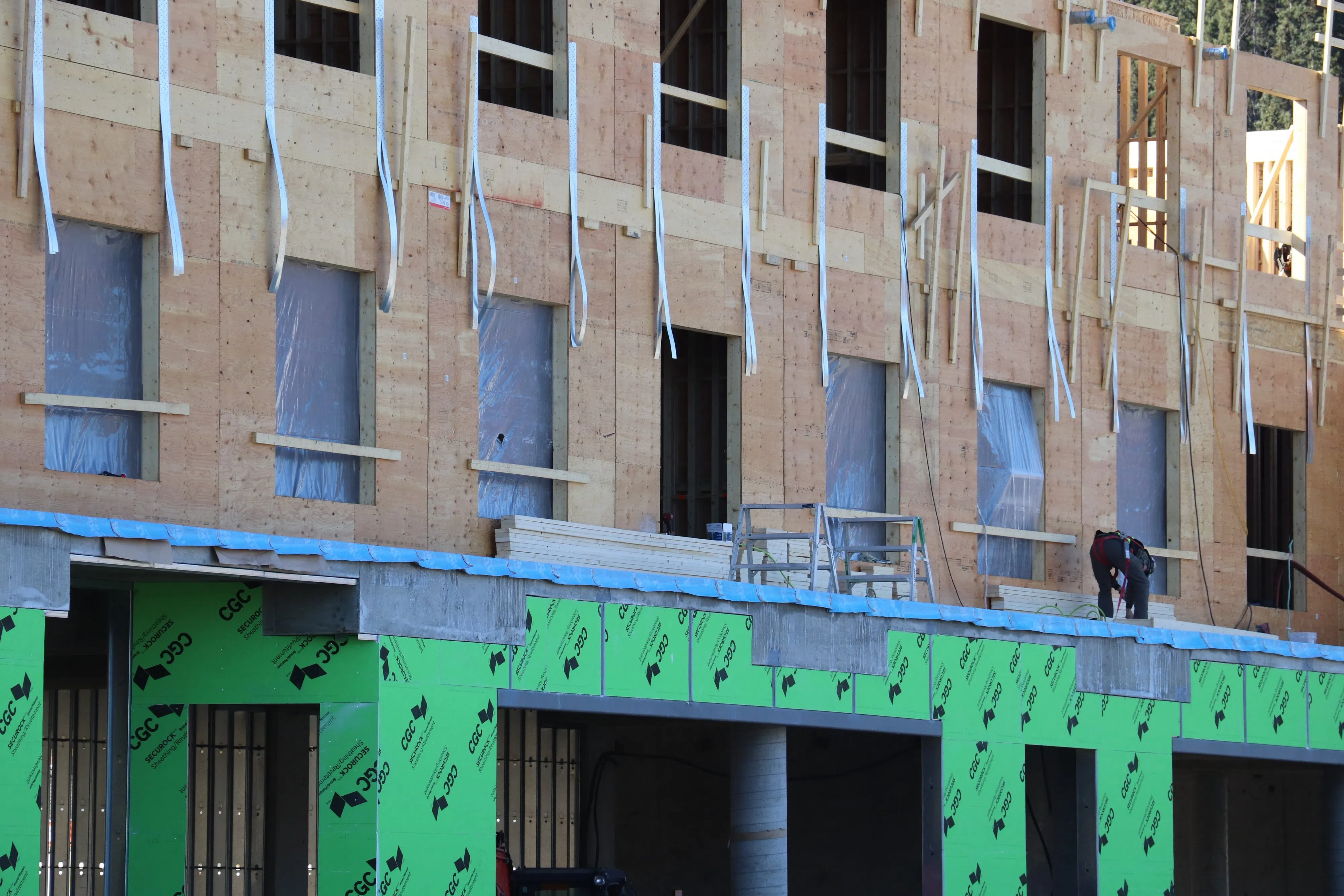
Construction work being done on a building in downtown Whitehorse. Photo Courtesy of Macklen Linke/CKRW.
Whitehorse, YT – As the Federal Government seeks to convince Canadians that they are taking significant action on the housing crisis, through a series of housing measures included in the new budget, they recently unveiled a new plan to build 250,000 homes nationwide by 2031 by opening up public lands for the possible construction of more affordable housing.
The Public Lands for Homes plan unlocks the use of public lands, including Canada Post properties and National Defense Lands for the private sector to construct more affordable housing. The Government says that using public lands will help drive them towards their target of building over three million homes by 2030.
Essential to the plan is the need for the Federal Government to work with territorial, provincial, and municipal leaders to ensure that the use of public lands aligns with urban planning, especially in areas already densely developed. Immigration Minister Marc Miller was in Whitehorse to announce the plan and said collaboration is key for building homes while meeting the priorities of individual communities.
“What is important as we see the number of homes increasing is that we can’t be seen as supporting necessarily urban sprawl,” said Minister Miller. “I think there are a lot of efforts that we can make to make sure that we are supporting densification, which has been identified as experts by experts is an important step in making sure that we would get we do it and do it right.”
In the Yukon, a few public lands are being considered for use through this initiative however there are currently no concrete plans in place creating a need to flesh out further details before any development is set in motion.
Ensuring equitable access to affordable housing, Minister Miller highlighted several other Liberal Government initiatives including the Rapid Housing Initiative and the Housing Accelerator Fund which incentivize the construction of housing units.
The Liberal Government has faced criticism recently for seemingly exacerbating the housing crisis by increasing the number of permanent residents welcomed to Canada to 500,000 by 2025, twice the amount received in 2015. The Bank of Canada stated in their Monetary Policy Report for April 2024 that housing prices are rising, in part, due to increasing population.
While acknowledging that immigration can impact the demand for housing Minister Miller says housing issues are more nuanced than just immigration policies.
“Sometimes we don’t necessarily look at the other side of the equation and the reasons why we bring people into this country, to help build houses, to work in our health care system, and to contribute to all the institutions that we need to continue to thrive if we’re going to be the country that we aspire to be in the context of an aging population,” said Miller.
Minister Miller says that his recent two-year cap on international student study permits and the plan to reduce temporary residents to 5 percent of the population over the next three years will help ease the burden on housing demand.







